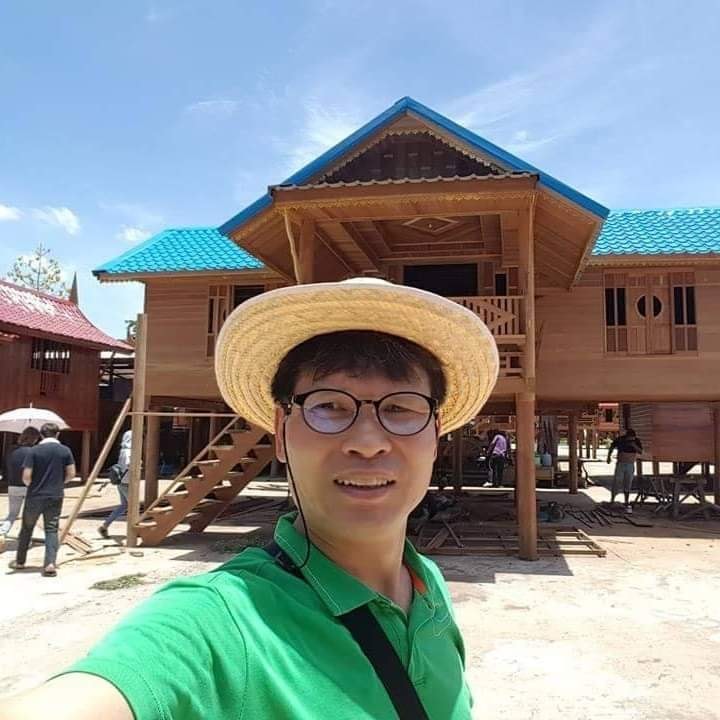1. Take in-person Korean language courses.
직접 한국어 과정을 수강하세요.
Before you start studying, you’ll have to learn the foundations of the Korean language. The best way to do this is by taking Korean language or writing courses. You may be able to take classes at a local college or community center. Search online for Korean classes close to you and register before the deadline.
If you are learning for the first time, you should pick basic or introductory classes.
2. Learn Korean through online resources.
온라인 리소스를 통해 한국어를 배우세요.

Popular online language learning courses include KoreanClass101, Talk to Me In Korean, TuneIn, Udemy, and Coursera. Some online classes, like KoreanClass 101 and Talk to Me in Korean are free of charge. Other websites like Udemy and Coursera charge a fee for classes but also include an instructor. If you aren't taking in-person classes, consider registering for a paid course so that you can ask the instructor questions when you get stuck.
3. Learn the letters in Hangeul.
한글 글자를 배워보세요.

Hangeul has 24 letters, or jamo, with 10 vowels and 14 consonants. Before you can move onto more complex words and phrases, you must memorize the Hangeul alphabet.
For example, to write the word "Hangeul," you must know all of the letters. These include ᄒ for h,ᅡ for a, ᄂ for n, ᄀ for g, ᅳ for e and u, and ᄅ for l. The final word looks like 한글.
4. Learn common Korean phrases.
일반적인 한국어 표현을 배웁니다.

Knowing common phrases will help you communicate if you are visiting Korea and don’t know the language fluently. Learning common phrases like “Hello, how are you?” and “What time is it?” will help you survive if you're in a mostly Korean speaking place.
For instance, to say “Hello” or “Goodbye” you’d say "Anyoung haseyo" (AN-NYEONG-ha-se-yo). The spelling in Hangeul is 안녕하세요.
To ask for the time you can say "Jigeum myeoshiyeyo?" (SE-GOON-moi-shia) It's written like "지금 몇시에요?"
Learn how to count to 10 so that you know how to write and say numbers.
5. Study Korean sentence structure.
한국어 문장 구조를 공부합니다.

The basic Korean sentence structure is the subject first, then object, then verb. For example, instead of writing or saying “I rode the horse,” you would say "I horse rode.” Each Korean sentence must end in either an adjective or verb.
For example, to say “I am a student,” you’d say “I student” followed by the verb “to be.” It's written like 저는 학생이에요 and you pronounced, Jeoneun haksaengiyeyo.
Method 2 of 3:Keeping Good Study Habits
1. Keep detailed notes as you learn.
학습하는 동안 자세한 메모를 유지합니다.
As you go through Korean lessons, write down notes so that you can study after instruction. Notes can include important details, grammar rules, and pronunciations of certain words. Actively writing while you learn will help you retain Korean and will also give you more material to review when you study it.
Concentrate on words and phrases that you have trouble remembering or pronouncing.
Good notes will include the pronunciations next to your Korean words.
2. Record and listen to yourself.
녹음하고 직접 들어보세요.

How you sound in your head may be different than how you actually sound to other people. Recording your own voice while you practice will help you refine your Korean speaking skills. Listen to your recording along with the proper Korean pronunciation and see where you make mistakes. Try to go back and pronounce the word or phrase properly.
3. Create and follow a study schedule.
학습 일정을 만들고 따르십시오.
In order to grow your Korean reading and writing skills, you’ll have to practice regularly. Carve out at least an hour or more every day around the same time to practice your Korean. Break each study section into parts so that you don’t feel overwhelmed. If you stay on a regimented schedule, you’ll be able to develop your skills much faster.
For example, you can schedule 20 minutes to learn new Korean words, 20 minutes on translating Korean to English, and 20 minutes reading a Korean book.
4. Save difficult portions for later on in your studies.
(나중에 공부할 때를 위해 어려운 부분은 저장하십시오.)

Korean has honorifics, which means that there are different words you should say depending on who you’re speaking to. There are also specific conjugations for past, present, and future tense. Instead of concentrating on these aspects of the language, save them for after you become more accustomed to Korean words and phrases.
Honorifics are determined by the age of the person you’re talking with and the type of relationship that you have with them.
5. Use a translator as you study.
(공부할 때 번역기를 사용하십시오.)
Keep a language translation app or Google translator nearby as you study so you can translate words and phrases that you don’t know. Being able to translate on the go is faster and easier than having to look up the word in a dictionary.
Popular translation apps include Naver, GreenLife Korean English Translator, and iTranslate.
Method 3 of 3:Reinforcing your Studies
1. Have conversations with people who speak Korean.
Speak with someone that’s fluent in Korean and good with Korean pronunciations. Tell them to correct you if you say or pronounce something incorrectly. The more you get used to speaking the language regularly in conversation, the quicker you’ll become fluent.
You can try fi
'엔터테이너 > 꺼리' 카테고리의 다른 글
| 김진호의 세계일기 [윤석열 FA 기고문] (0) | 2022.06.09 |
|---|---|
| 다 합쳐도 손흥민 한 명의 몸 값도 (3) | 2022.06.06 |
| 2022 카타르 월드컵 소식 (4) | 2022.06.03 |
| 2022 카타르 월드컵 (2) | 2022.06.02 |
| 토트넘의 역사 (0) | 2022.05.24 |

